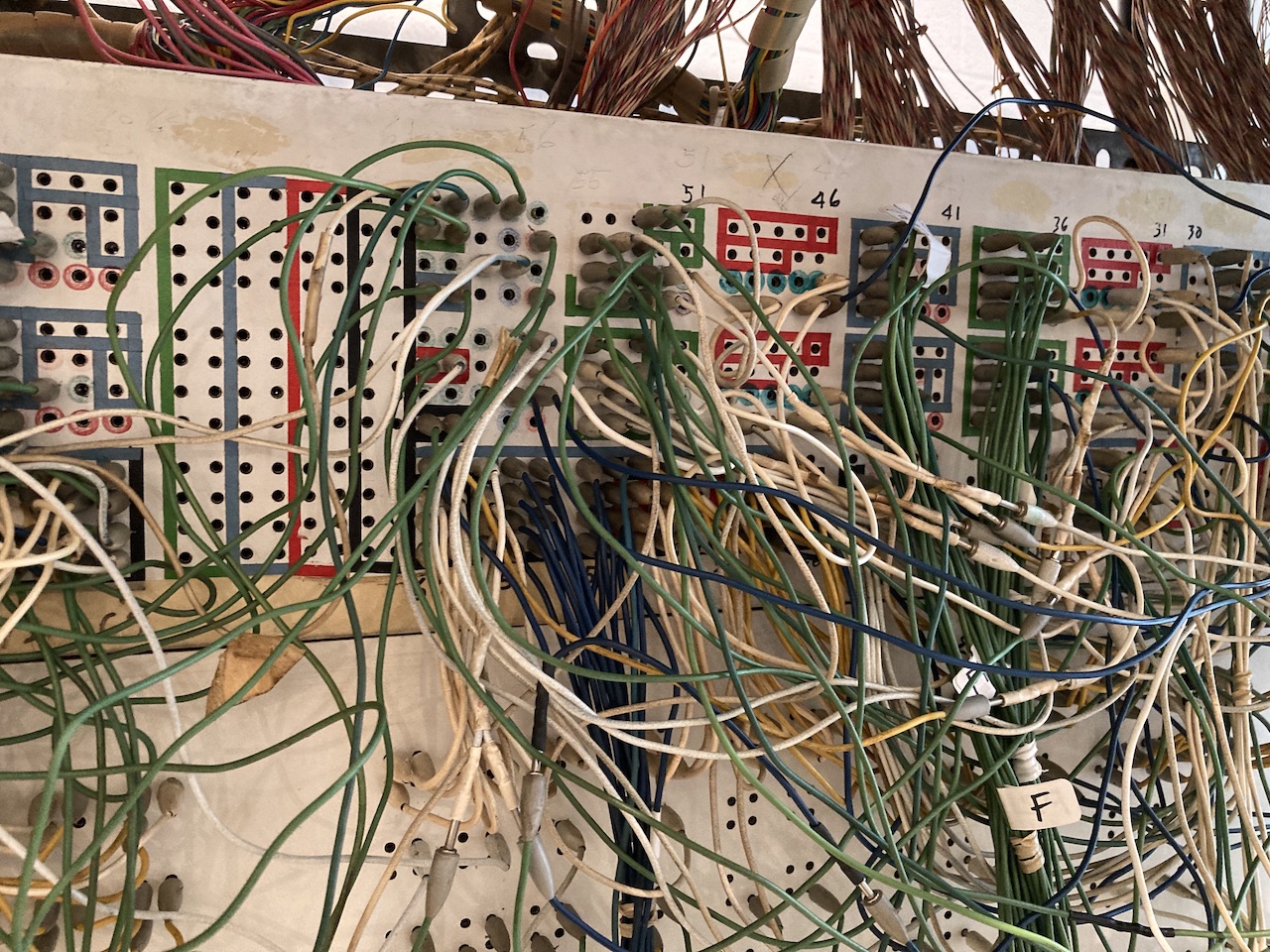I headed down to campus (ie., the campus of the University of Illinois at Urbana/Champaign) and met with Scott Schwarz, who had graciously allowed me to work on the SalMar on this, the Labor Day holiday. Scott is the archivist in-chief at the Center for American Music, aka., the ‘Sousa Archives,’ housed on campus in the Harding Band Building. From here on out, I’ll refer to this location as CAM and/or Sousa. The SalMar refers to the SalMar construction, a large, non-portable, one of a kind music synthesizer. Upcoming is an event featuring David Rosenboom, Greg Danner, and perhaps others besides myself, in which the SalMar will figure into a lecture by David originating at CAM and streaming, audio and video, outward, but particularly to a venue at the School of Music, elsewhere on campus.
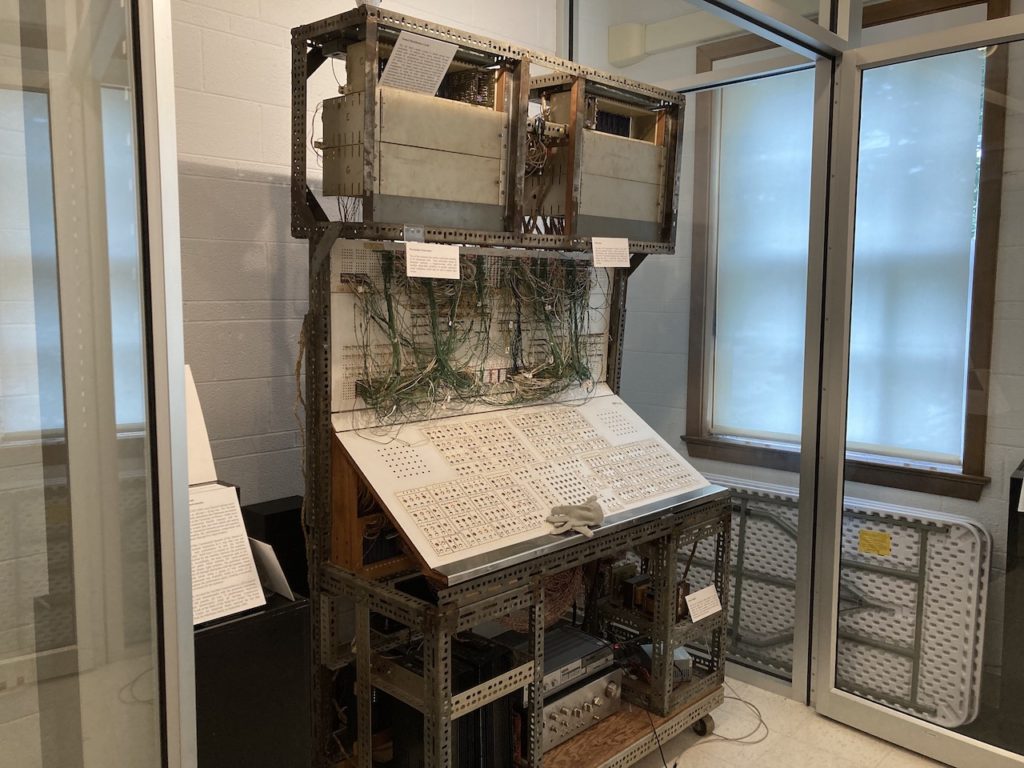
I’ll let the photos I took today speak more clearly than all the description I could manage. The gloves, by the way, are provided for SalMar performers by CAM. They are ordinary conductive gloves, the sort used for touch pads and screens on computers, phones and tablets . They are not as reliable as bare skin for sensitive work in musical time, but I wore them durning my jams on the SalMar today, since I was … you know, just jamming. I photographed most of the CAM placards. I’ll post those here also… making this sort of a virtual visit to the SalMar installation at Sousa!
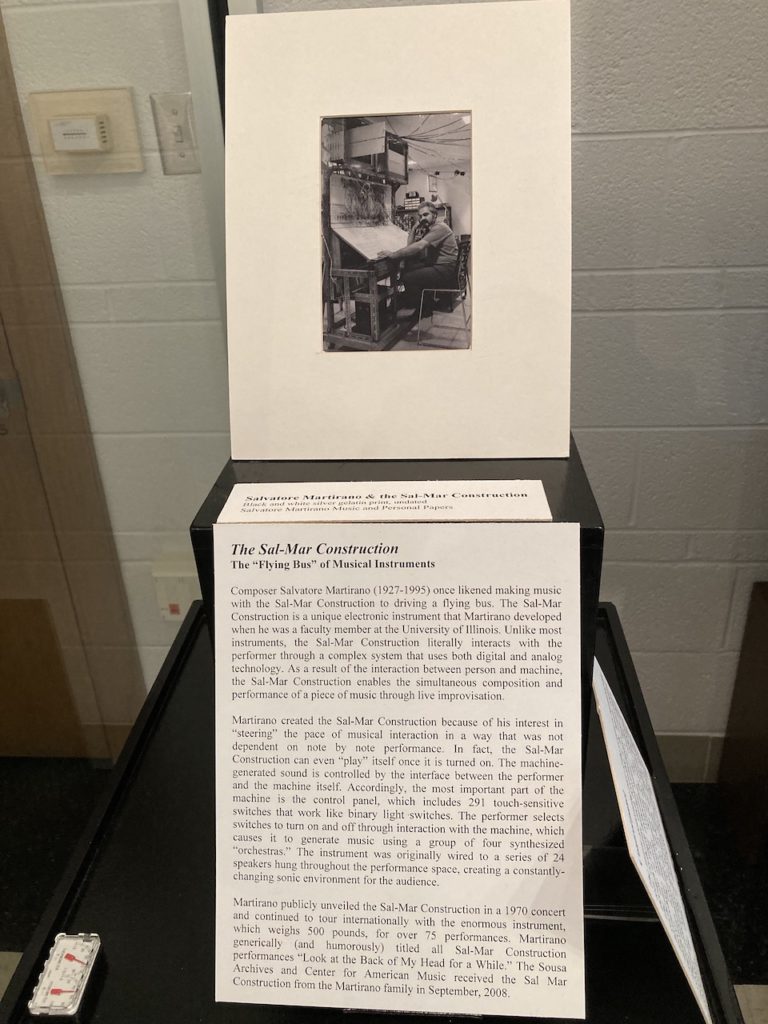
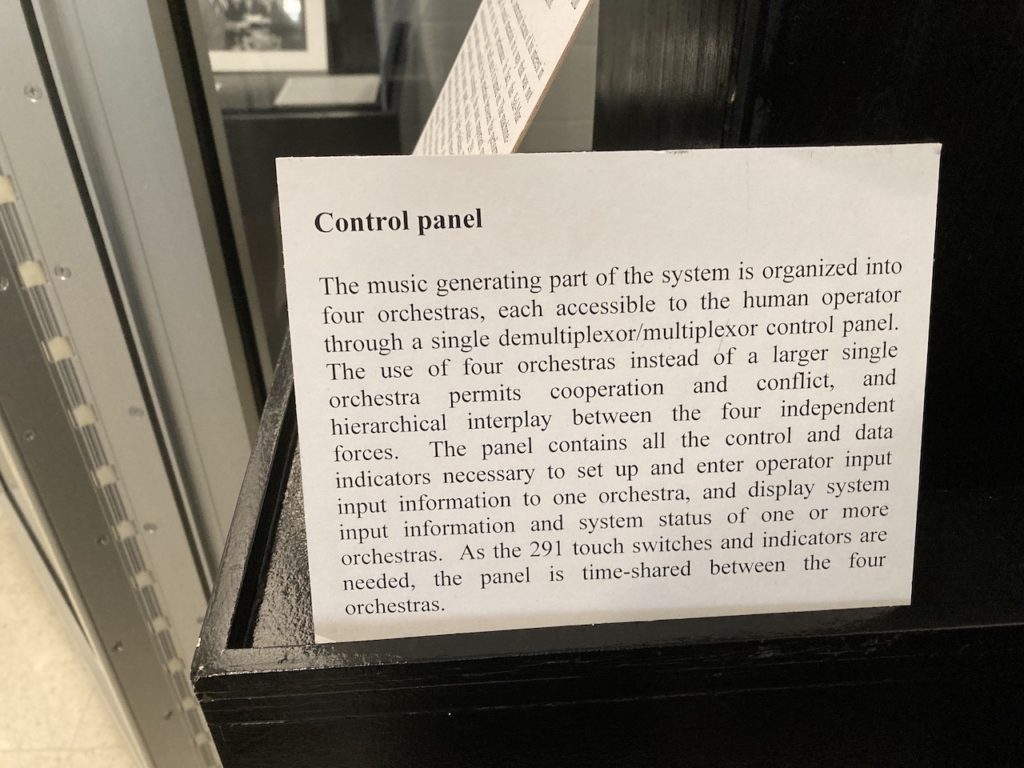
It is critical to keep in mind that the SalMar differs from most other music synthesis devices in that it generates material for the performer to interact with. Thus, the functions ndo not so much as do or cause something to happen, but rather, select, sculp or shape what is happening. There are certain conditions where nothing is heard, but if the 120 volts of line current power is on, and the power supplies of 5 volts dc for logic and 15 volts dc for analog circuits are functioning, the SalMar is doing something.
Note: it would be sweet to have power supply monitors. There are neon indictors, well-buried under the panel, but this merely indicates the presence of line voltage.
Calling the SalMar sections ‘orchestras‘ is a bit peculiar, I think. I prefer to think of the sections as a collection of discrete functions, all of which interact, or can be made to interact, with a hexadecimal basis organized from most significant bit to least significant bit. Labeling: the MSB is letter G, and the LSB is A. The organization is top to bottom, left to right:
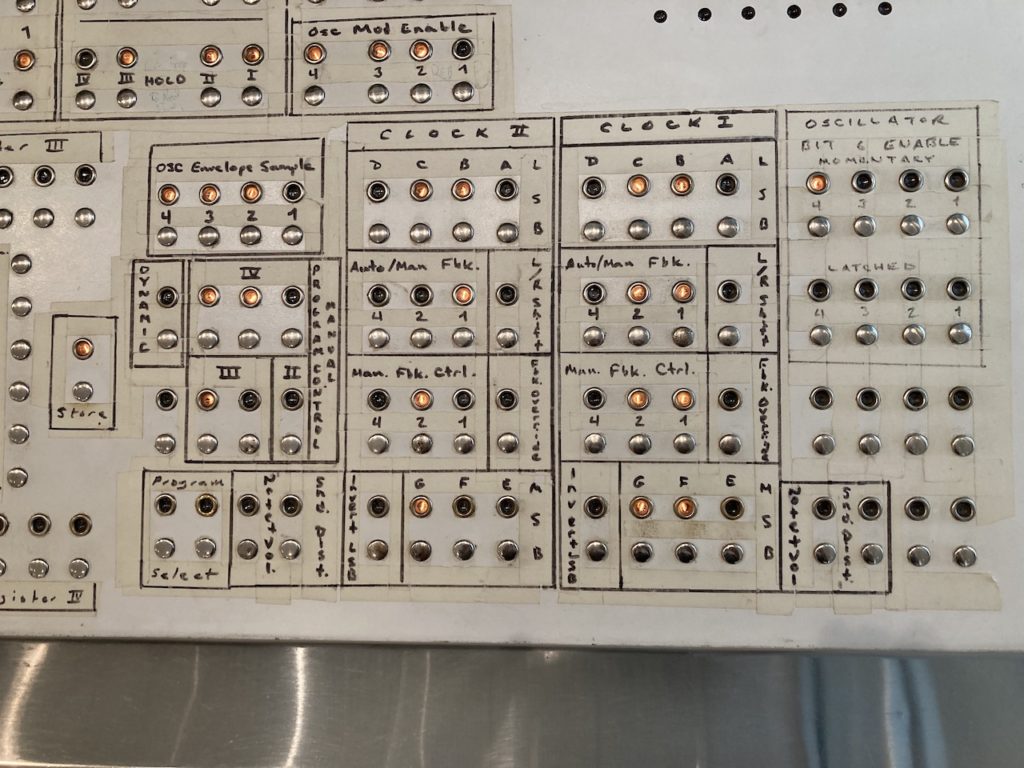
The MSB has the most effect on what ever parameter it pertains to. The two main parameters are the four clocks and the eight oscillators. There are also envelope shapers, wave shapers, modulation and feedback. These are less suggestible than the clocks. In general, the result of calling up ‘bits,’ or, more properly, assigning a bit width to a parameter, might give a logical result, but it will not be the intuitively expected result. For example: the clock runs quite slowly (as slowly as possible… death-crawl slow) with only G lit. And, by the way, one has a hand on the metal rail, and activates a function by touching a button. The function is deactivated by touching a ring. A common technique for making sure connections is to have a thumb on the button and touching a ring. This keeps the lamp on the ring lit, though it might flicker slightly. The electrical effect takes effect instantly. The audible result is dependent on the function called up, obviously. So… back to the clock… Light up F AND G, and the clock is moving faster. But now, to achieve variations between G and F, one can light D through A in any combination. Depending on what’s lit below, in the ‘MSB’ group, the ‘LSB’ group has more or less effect. The ‘6 bit enable’ section adds some rhythmic variation to the effect of the clock. It turns out that 7 bits just don’t swing sufficiently.
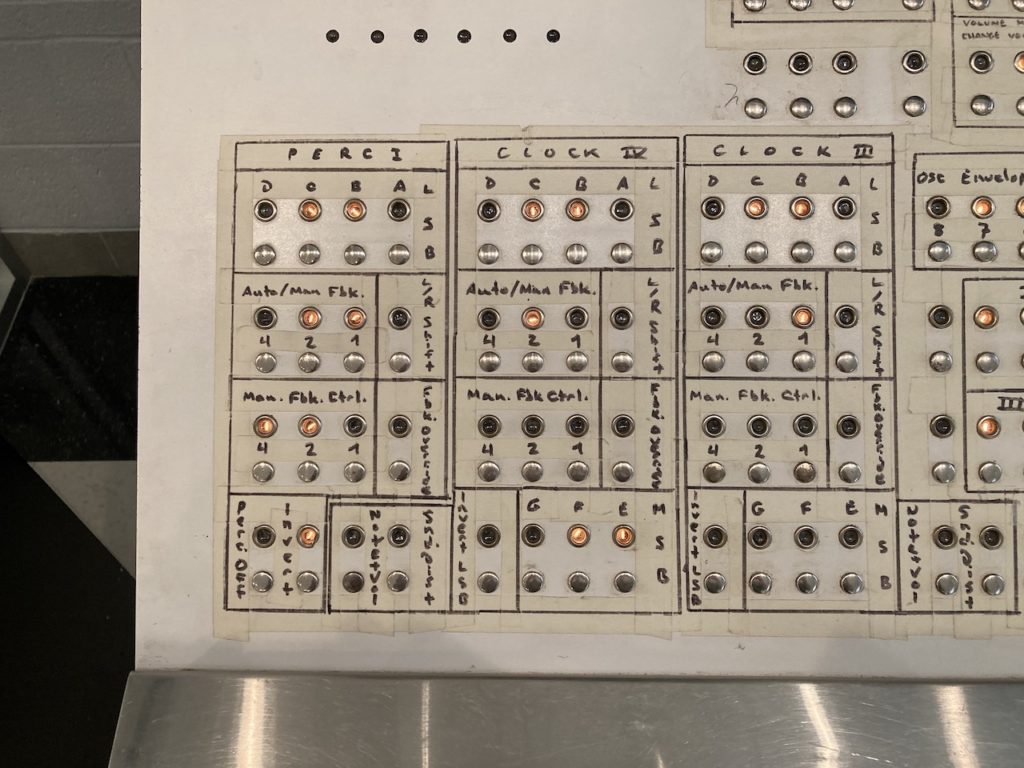
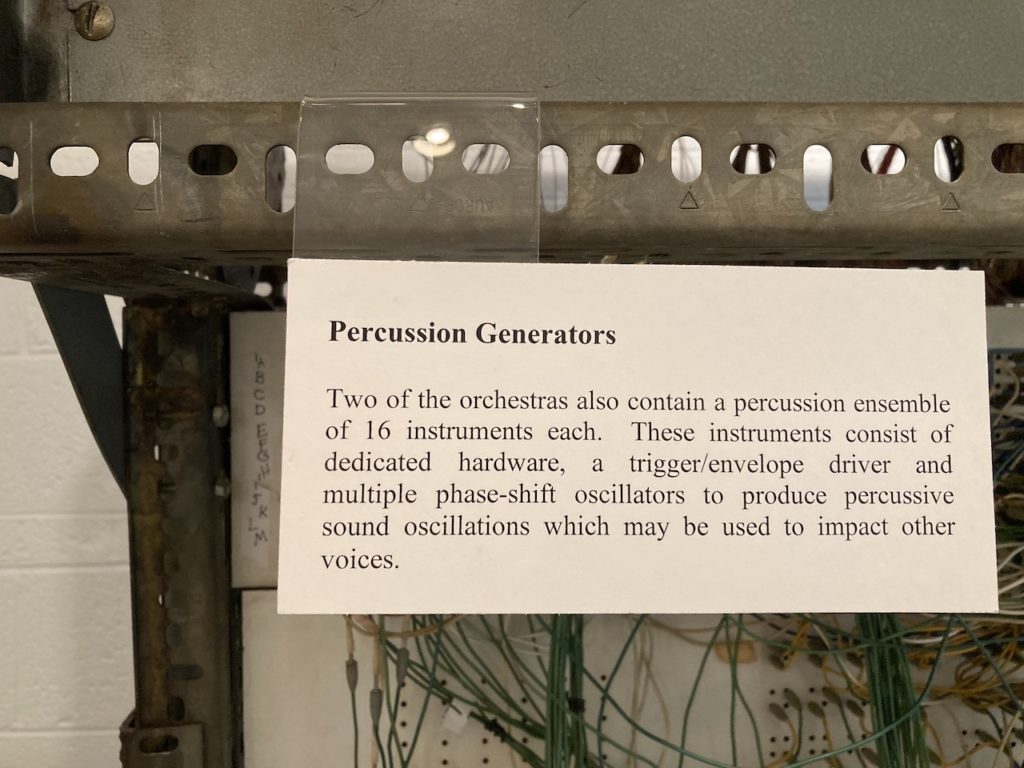
Here’s a typical oddity. Though there are two percussion generators, there is only one clock control for them. That’s an instrument wide arrangement: each clock controls two oscillators. But…
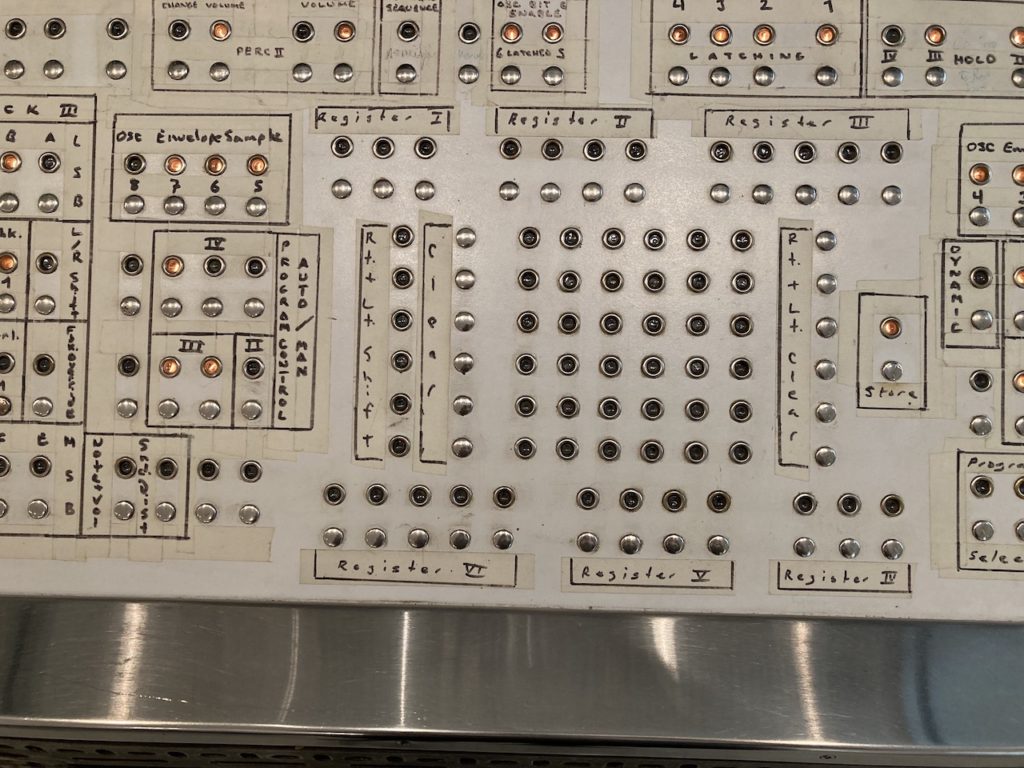
You’ll notice the section marked ‘program control auto/man.’ There’s one of these in the photo above of the lower right side also. In my present understanding, this label is misleading. These button/rings control which oscillators have a connection (or lack of connection) to which clocks. Greg Danner has been restoring the instrument for years, and was a graduate student during the time when the SalMar was being either constructed, perfected, or in use. I’ll clear up this understanding of the timing of the development as I learn more about it, but Greg is actively working at bringing the SalMar up to spec and keeping it maintained. Greg pointed out last Thursday (September 1st, 2022) that when the right side program control lights are out, clock I controls oscillators 1-4. I spent some time today wondering, ‘when the left side program control lights are out, does that mean clock I controls all the oscillators? Or does the left side pair just 5-8 with clocks III and IV? And why are there groups of buttons for this function? 1 for II, 2 for III, and 3 for IV? It would not surprise me if this was a reference to numbers of bits or groups of bits, as in an MSB arrangement, denoting a probability.
To say it another way, and again: the SalMar is all about probabilities.
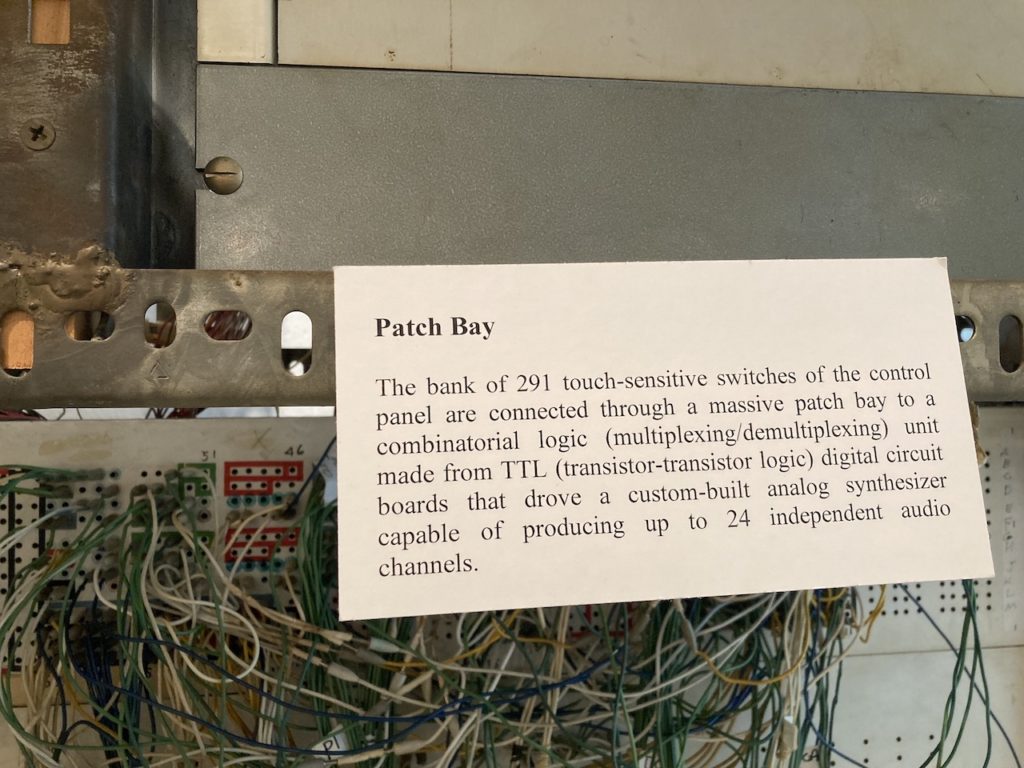
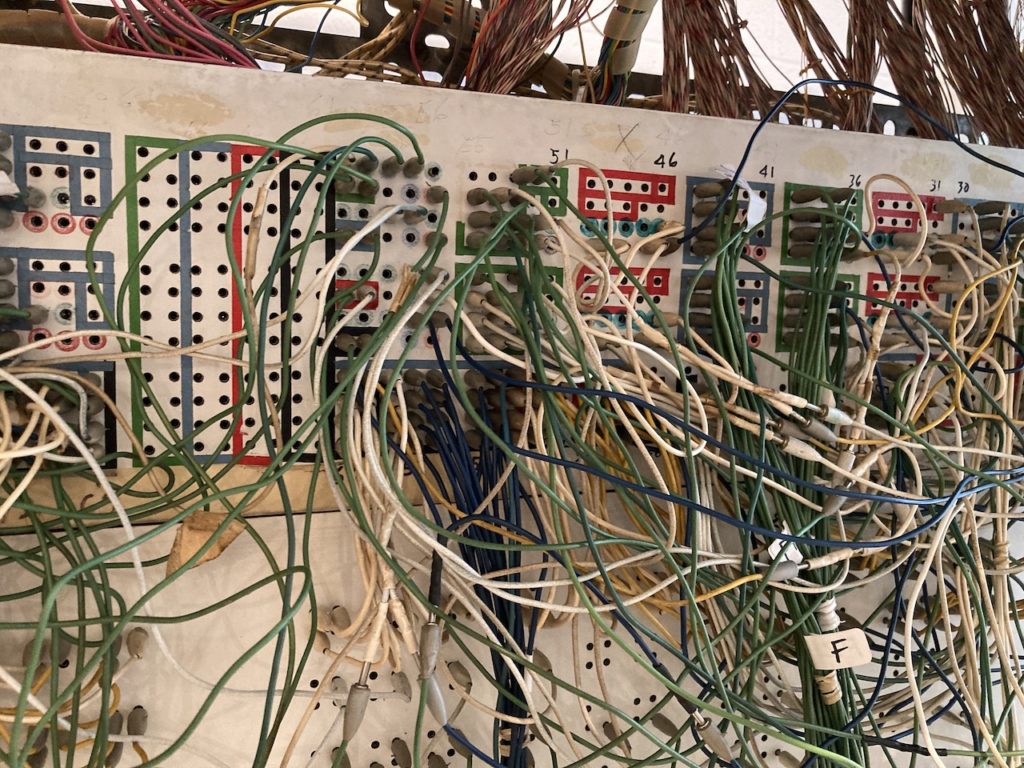
Today, I had some fun with TTL (transistor-transistor logic)…
I’ll post my jams, recorded to a Zoom H1 from the line out of the two integrated amps that currently make the SalMar audible, as soon as I do some editing. And I’ll post more pics and notes… But this post will have to live on its own for now…
Links to the 9-5-22 SalMar recordings on Dropbox. Note: files are 44.1 kHz wav files, and therefore take time and bandwidth to download. Edited files to follow…
